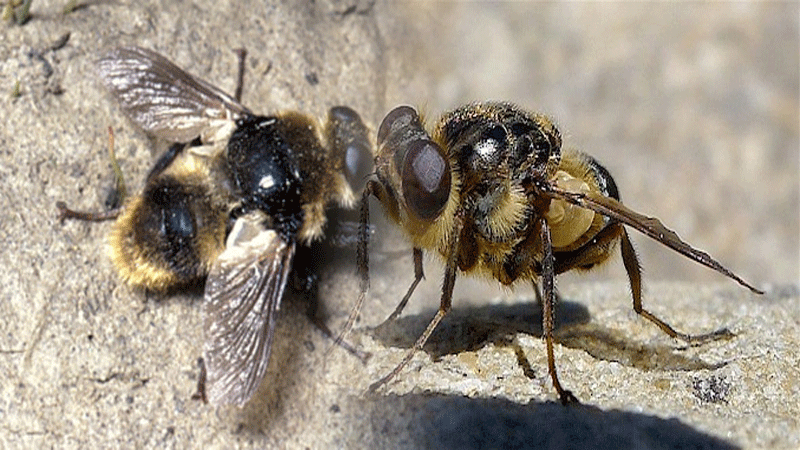Warble flies are commonly known as gadflies or heel flies. The class is Insecta, and the family is known as Hypodermatinae.

Warble flies are commonly known as gadflies or heel flies. The class is Insecta, and the family is known as Hypodermatinae. There are 9 genera and 32 species in this class. H. bovis and H. lineatum are very important from the perspective of veterinary medicine. Other species are
- Diana, H. Tiranti, etc
These warble flies are usually present around 25 to 60 ° in the northern hemisphere, e.g., Japan, America, the UK, and Canada. The Scavandian countries like Sweden, Denmark, Finland, the Netherlands, and the islands are free from its prevalence.
The adult flies are bee like in appearance, with a size of 15mm for H. bovis, 13 mm for H. lineatum. The colour is yellow to reddish in the anterior and black in the posterior of H. bovis.
- Lineatum has yellow and brown on both sides. The hairs on the thorax are denser than H. lineatum.
Transmission
The adult fly cuts the skin and underlying flesh of the host and moves towards the spinal cord and esophagus.
Life cycle
The adult fly lays eggs on the lower parts of the host, such as the rump and legs. The process of oviposition started 24 hours after the adults emerged from the pupa.
The eggs hatch into larvae within 4 days. The eggs hatch into L1 larvae, and these crawl towards the skin and cut the skin with the help of hooks and proteolytic enzymes and start to move the larvae of H. bovis towards the spinal cords along the nerve and on either side of the midline within the area of 25cm.
This stage lasts for 6 months and moults to L2 over there, then these larvae overwinter and resume their migration in March or April. The larvae of H. bovis move towards the skin and moult to L3.
The larvae of this stage are known as cattle grubs. They apply the spiracular plates for respiration and cause holes in the skin after puncturing it. Ultimately, there is the formation of swelling underneath the skin.
That is called warbling. The 3rd stage larvae of H. bovis can be differentiated from other stages because they have spiracular plates surrounding the button posteriorly and forming funnel-like channels. While the H. lineatum has spiracular plates, they are surrounded by buttons posteriorly that are in the form of broad channels.
During the movement of larvae, there is the formation of extensive tunnels or burrows within the body, resulting in the production of gelatinous tissue, which is called butcher jelly.
Pathogenesis
- Inflammation and edoema
- Butcher jelly
- Loss of weight gain
- Anaphylactic shock
- Devaluation of hide and breathing holes
- Gadding about
- Abortion
- Wound
- Myiasis
- Poor milk production
- Heeling
Dx
The diagnosis is on the number of eggs present and larvae identification.
Rx
Organophosphates and macrocyclic lactones can be used.
Like moxidectin, ivermectin, and eprinomectin.
Pourable products of Eprinex can be used on wounds.
Control
The prevention of seasonal outbreaks, especially in summer, is effective for controlling flies.
This article is jointly authored by Muhammad Tayyeb and Dr. Muhammad Sohail Sajid from the Department of Parasitology, FVS, UAF, and FSD.